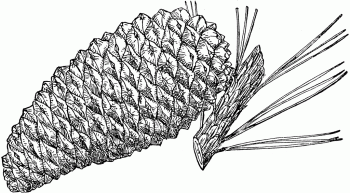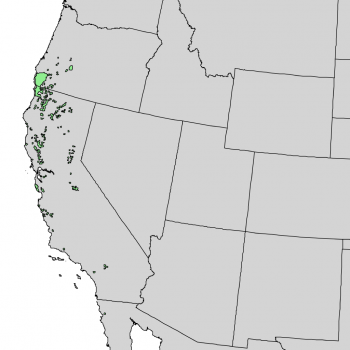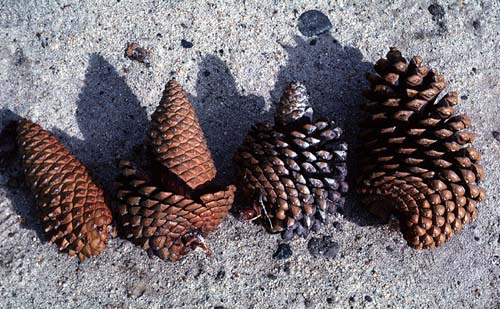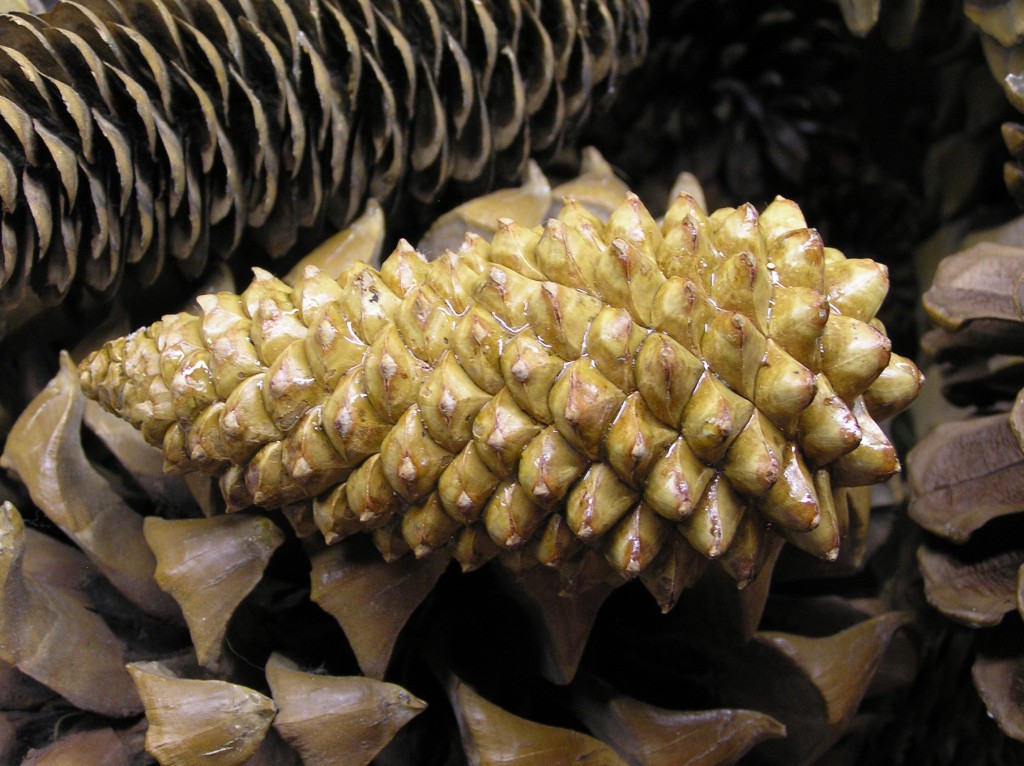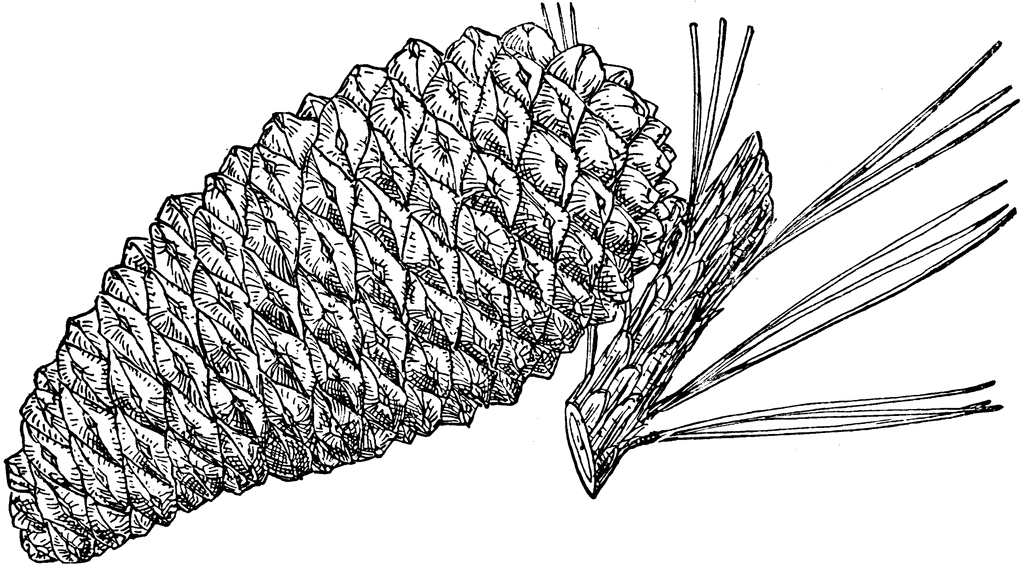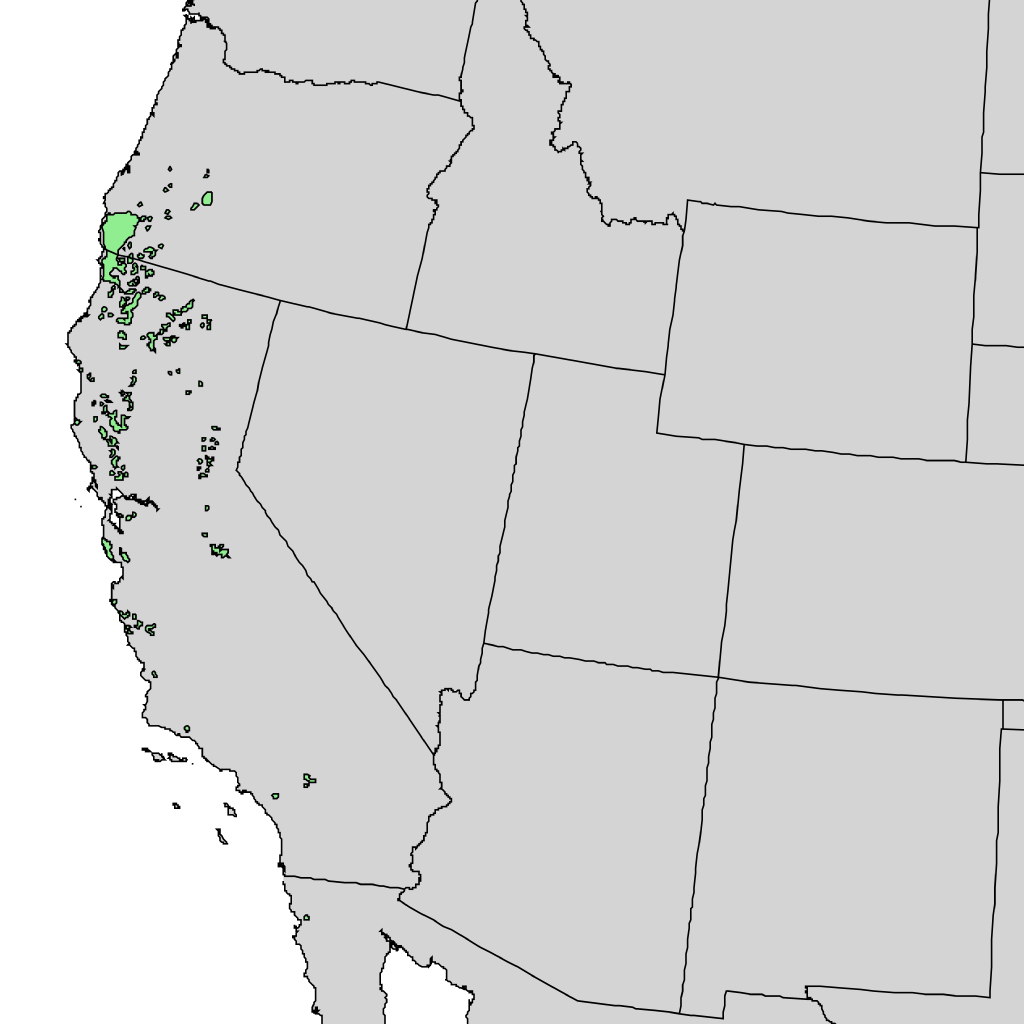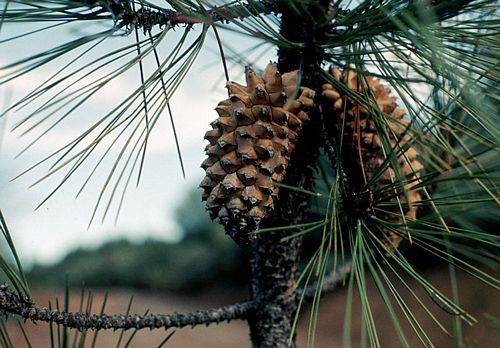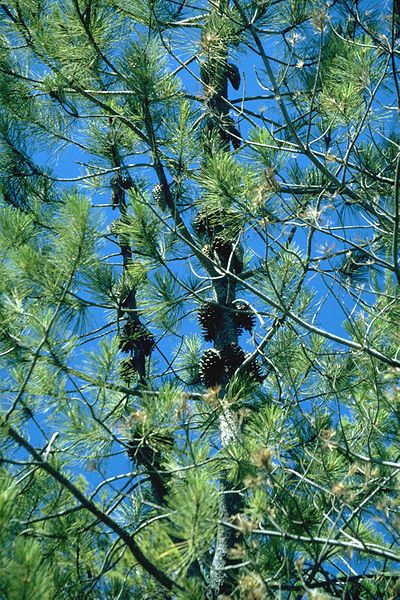subgenus Pinus, section Trifoliae (Duhamel), subsection Attenuatae (Van Der Burgh).
Pinus attenuata, as described in 1892 by John Gill Lemmon (1832-1908), is commonly known as knobcone pine. In the Latin language, "attenuatus" translates in "pointed," which describes the seed cones.
Description. Knobcone pine is an evergreen coniferous species of tree that will grow to mature heights of 80 feet (24 m) tall or little more than a shrub where found growing on very poor sites. Typically straight trunk grow to diameters of up to 32 inches (80 cm), measured at breast height. The tree's crown is usually conically shaped.
- Bark is colored purple-brown to dark brown, shallowly and narrowly fissured, with irregular, flat, loose-scaly plates. On upper sections of trunk, bark is nearly smooth.
- Branches grow ascending; shoots are slender and red-brown in color.
- Leaves (needles) grow in bundles of 3 per fascicle, spreading or ascending from the stem. They persist for 4 to 5 years, measuring 3.6 to 6 inches (9 - 15) cm long and 0.052 to 0.072 inch (1.3-1.8 mm) wide. They are straight to slightly curved, twisted, yellow-green in color, with fine stomatal lines on all surfaces.
- Buds are ovoid to ovoid-cylindric shaped, dark red-brown colored, aging darker. They measure circa 0.6 inch (1.5 cm) long, with fringed, resinous scale margins and an attenuate apex.
- Pollen cones ellipsoid-cylindric shaped, 0.4 to 0.6 inch (10 - 15 mm) long and orange-brown colored.
- Seed cones remain closed for 20 years or more, or open when exposed to fire. They grow in whorls around the branches, are hard and heavy, very asymmetric. Their shape is lanceoloid before opening, ovoid-cylindric when open. They measure 3.2 to 6.4 inches (8 - 16 cm) long, colored yellow-brown or pale brown, sessile or on a 0.4 inch (1 cm) peduncle. Cones mature 2 years after pollination.
- Cone scales with rhombic apophyses angle toward the outside base, increasingly elongate, raised-angled-conical shaped, downcurved near base, scarcely raised on branchlet side. An umbo is central on the scale, low-pyramidal shaped, sharp and upcurved.
- Seeds are compressed-oblique-obovoid shaped with a 0.16 to 0.28 inch (6 - 7 mm) body. They are nearly black in color with a narrow wing up to 0.4 inch (20 mm) long.
Distribution. This species is native to USA - Oregon and California, specifically in the Coast Range mountains of southern Oregon and northern California (the Siskiyou Mountains, Trinity Alps, Mount St. Helena Summit, etc.). Near Carmel, Monterey County, California they can be found in the Santa Cruz Mountains and on Point Pinos, on the eastern slopes of Monterey County's Santa Lucia Mountains; as well as on Mount Shasta at elevations of 4,000 to 5,600 feet (1,200 - 1,700 m) above sea level.
On the western slopes of the northern Sierra Nevada mountains, knobcone pines are found growing at elevations of 1,500 to 4,500 feet (450 - 1,400 m) above sea level, south to the south side of the San Bernardinos at 2,500 to 4,000 feet (750 - 1,200 m). Otherwise absent in the California's southern Sierra Nevada and southern Coast Ranges.
It also grows in Mexico - Baja California Norte.
This pine is hardy to USDA Zone 7, cold hardiness limit between 0° and 10°F (-17.7° and -12.2°C).
